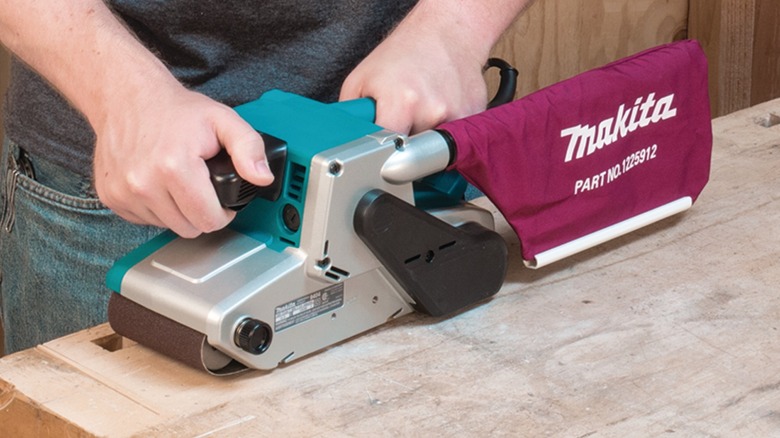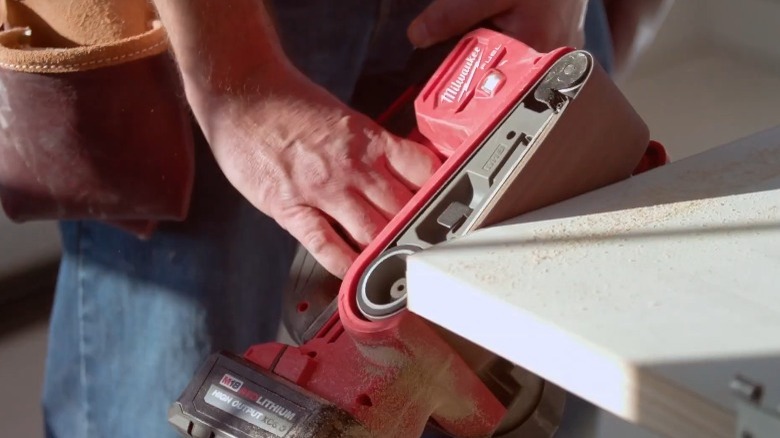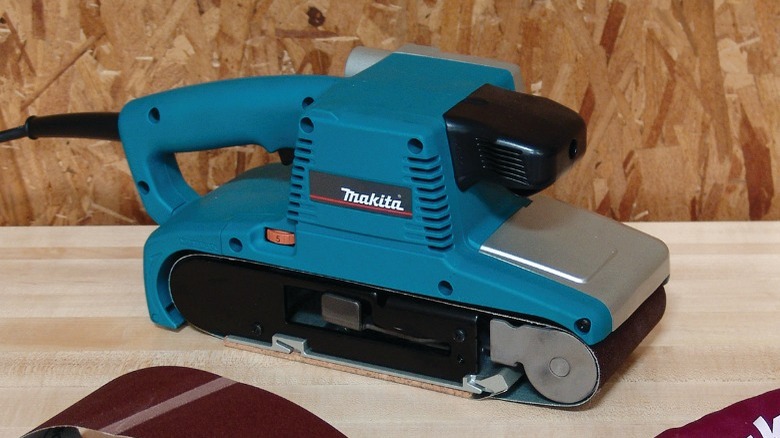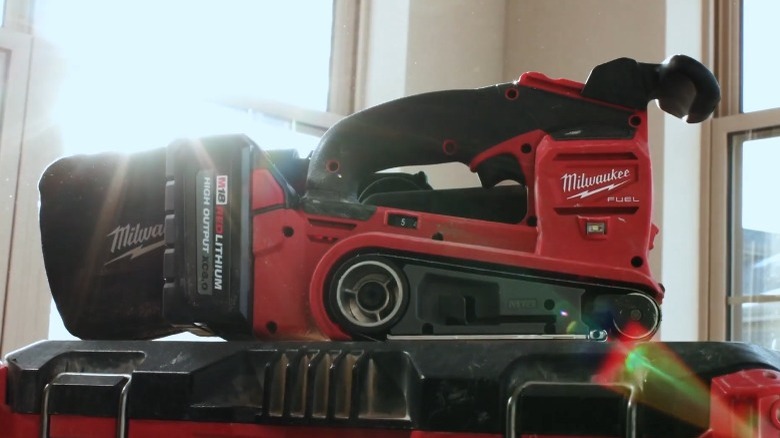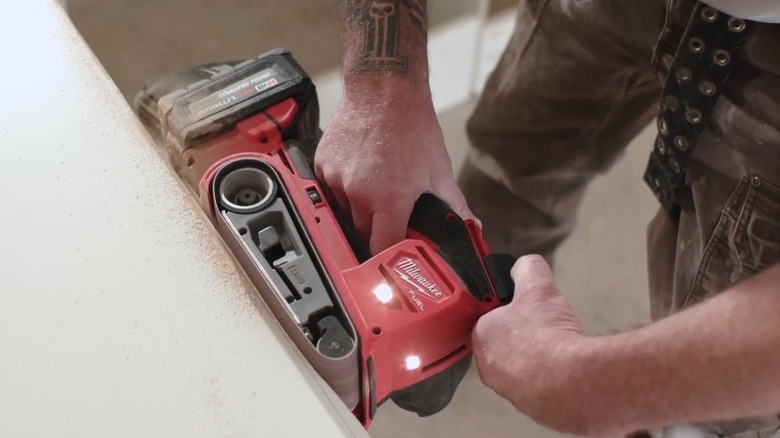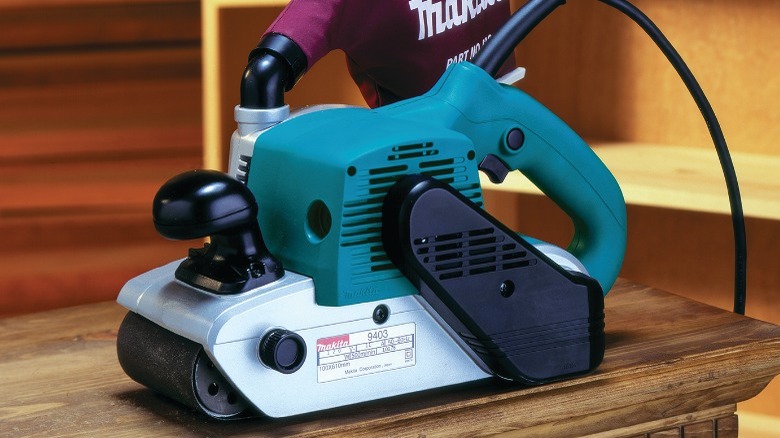Makita Vs. Milwaukee: Who Sells The Better Belt Sander?
We may receive a commission on purchases made from links.
A quality belt sander is an incredibly useful tool to have in your collection. It might not be as good for subtle detail work as a random orbital sander or a palm sander, but there are few tools out there that are better suited to stripping paint, filing down ridges, or any other jobs that require the rapid removal of large amounts of material. So anyone who plans to put in more than a couple of hours using a belt sander will probably want to make sure they get a good one.
Makita and Milwaukee are both ranked among the best power tool brands on the market. Each of these companies offers several belt sanders in a variety of different sizes and styles. Those who are interested in purchasing a sander from one of these companies might be interested in knowing a bit more about them.
How many varieties does each brand offer, what are the sanders' respective specs, what do professional reviewers think of them, and which of them offers the better value for the money? Both companies offer quality products, so there isn't really a wrong choice here, but we can attempt to gauge which of these brands sells the better belt sander for your needs by taking a look at each of these factors.
Makita has a wider variety, but the Milwaukee is cordless
The first thing you'll want to know is exactly what kinds of belt sanders each of these brands have on offer. Some of them might use different sizes of sandpaper, offer different power outputs, or come with different features. So choosing the right one for your needs is more than a simple matter of choosing the correct brand.
Makita offers five different models: a 3-inch x 21-inch belt sander, two different 3-inch x 24-inch belt sanders, and two different 4-inch x 24-inch belt sanders. The two 3-inch x 24-inch belt sanders are separated by differences in their power output potential, and only one of the 4-inch x 24-inch models offers variable speed functionality. Makita also sells a cordless 3/8-inch x 21-inch detail belt sander and a 1-1/8-inch x 21-inch belt sander, though these are more in line with bandfiles than true belt sanders. The narrow profile of their belts makes them better suited to specific kinds of detail oriented touch-up work than to multipurpose sanding and large scale surface removal. Aside from the one detail belt sander, all of Makita's options are corded.
Milwaukee, on the other hand, only has one true belt sander: a cordless 3-inch x 18-inch. This is powered by the company's powerful M18 Fuel battery system, making it an excellent option for those looking for a battery-powered sander to help you out with your next home woodworking project. Milwaukee also sells 1/2-inch x 18-inch and 3/8-inch x 13-inch bandfiles for detail work. Both of these are cordless as well, powered by Milwaukee's smaller M12 battery system.
Makita's have slightly better specs
Just one look at the products from Makita, and you'll see that just about all of the company's sanders are bigger or use wider lengths of sandpaper than the Milwaukee option, but size isn't everything. It's also worth comparing speed and power.
Starting off with the cordless Milwaukee, this sander has a variable speed dial that allows you to choose from five different speeds. According to Milwaukee, this "provides a belt speed range from 1350SFM to 750SFM (Surface Feet per Minute) for greater control of the removal rate in application." Milwaukee also states that the M18 battery generates the equivalent of 8 Amps of corded power.
Now let's compare that to the Makita options. One of the 3-inch x 24-inch belt sanders has a 7.8 Amp motor and rotates at a single speed of 1,300 SFM. The 3-inch x 21-inch, the other 3-inch x 24-inch, and the 4-inch x 24-inch with variable speed functionality all run on 8.8 Amps of power. These rotate at 690 SFM to 1,440 SFM, narrowly beating the Milwaukee at both ends of their range. Then there's the other 4-inch x 24-inch sander, which is easily the most powerful of the bunch, with an 11 Amp motor that can rotate the wider belt at a whopping rate of 1,640 SFM.
So most of the Makita's (with the obvious exception of the 11 Amp 4-inch x 24-inch) are right around the same power and speed as the Milwaukee on paper. But do they perform as well in live testing?
Both brands have excellent reviews
It's always worth taking a look at what professional reviewers have to say whenever you're comparing power tools. This helps to get a baseline for whether or not the products' real-world performance lives up to the manufacturer's promises.
Josh McGaffigan of Pro Tool Reviews took a look at the Milwaukee M18 Fuel Belt sander and seemed fairly impressed with it, overall. "I took off about a 1/4 inch of material across the work surface in just a few seconds using a 60-grit belt," he said. "This sander is a beast! All in all, this tool is an excellent solution for short-term work where you want to cut the cord." McGaffigan also praised the tool's ergonomics, dust collection, and easy toolless belt changing mechanism. He noted that the tool didn't get bogged down when you put pressure on it, but that the battery life left something to be desired. This makes it a great option for short projects, but less than ideal for longer ones.
Several of the Makita sanders have had professional reviews as well. Wood Magazine ranked both the 3-inch × 21-inch and the 11 Amp 4-inch × 24-inch among the five best belt sanders that they have tested in their shop. The magazine claimed that the 3-inch × 21-inch was one of the best all-around sanders, and the 4-inch × 24-inch was the most aggressive (though also the heaviest) out of all the sanders that they tested.
The Milwaukee is more affordable
Of course, it's impossible to compare products from two brands without considering the price and to be honest, none of these tools are cheap. The Milwaukee retails for $279.99 on the Home Depot website, which is currently offering a promotion that allows you to get a free M18 18V 5.0 AH battery when you order the sander online. Amazon has the tool going for a bit cheaper at $232.99, but does not include the battery.
As for the Makita's, the cheapest model currently for sale at Home Depot is the 7.8 Amp 3-inch x 24-inch, which is priced at $339.00. Meanwhile, the most expensive is the 11 Amp 4-inch x 24-inch, which is going for $369.00. That isn't too much of a surprise given that it's one of Makita's best-rated corded power tools, and it's easily the largest of the bunch. All the rest are somewhere in between.
Surprisingly, this means that the corded Makita's are more expensive than the cordless Milwaukee, even when you take into account the added cost of a battery. This makes the Milwaukee a particularly attractive option for anyone who may have already invested in the M18 battery system.
Verdict
As mentioned before, there are no wrong answers when choosing between Makita and Milwaukee belt sanders. All of these tools offer premium performance — albeit at a premium price — and should be able to handle most consumer-level projects handily. Choosing between them really comes down to what you need.
Budget-minded buyers and those who prefer cordless tools will most likely be tempted by the Milwaukee M18 Fuel Belt Sander. It offers comparable performance to most of the Makita line, while also boasting the added convenience of not needing to be tethered to a power outlet. This is a bit of a double-edged sword, however, as users have said it's one of the Milwaukee products you should steer clear of due to having poor battery life. Those needing to sand an entire deck, boat, automobile, or other large project will likely run out of juice long before they're anywhere close to finished. So they will either need a large supply of backup batteries, or a tremendous amount of patience as they wait for their battery to charge between sanding sessions.
The Makita tools, on the other hand, have the benefit of not relying on batteries for power and can therefore run endlessly. There is also a much wider range of products to choose from. The 11 Amp 4-inch × 24-inch model in particular has considerably more power at its disposal than the Milwaukee, and should therefore be able to make short work of more heavy-duty projects. The downsides here are that they are more expensive and require access to a power outlet in order to function.
